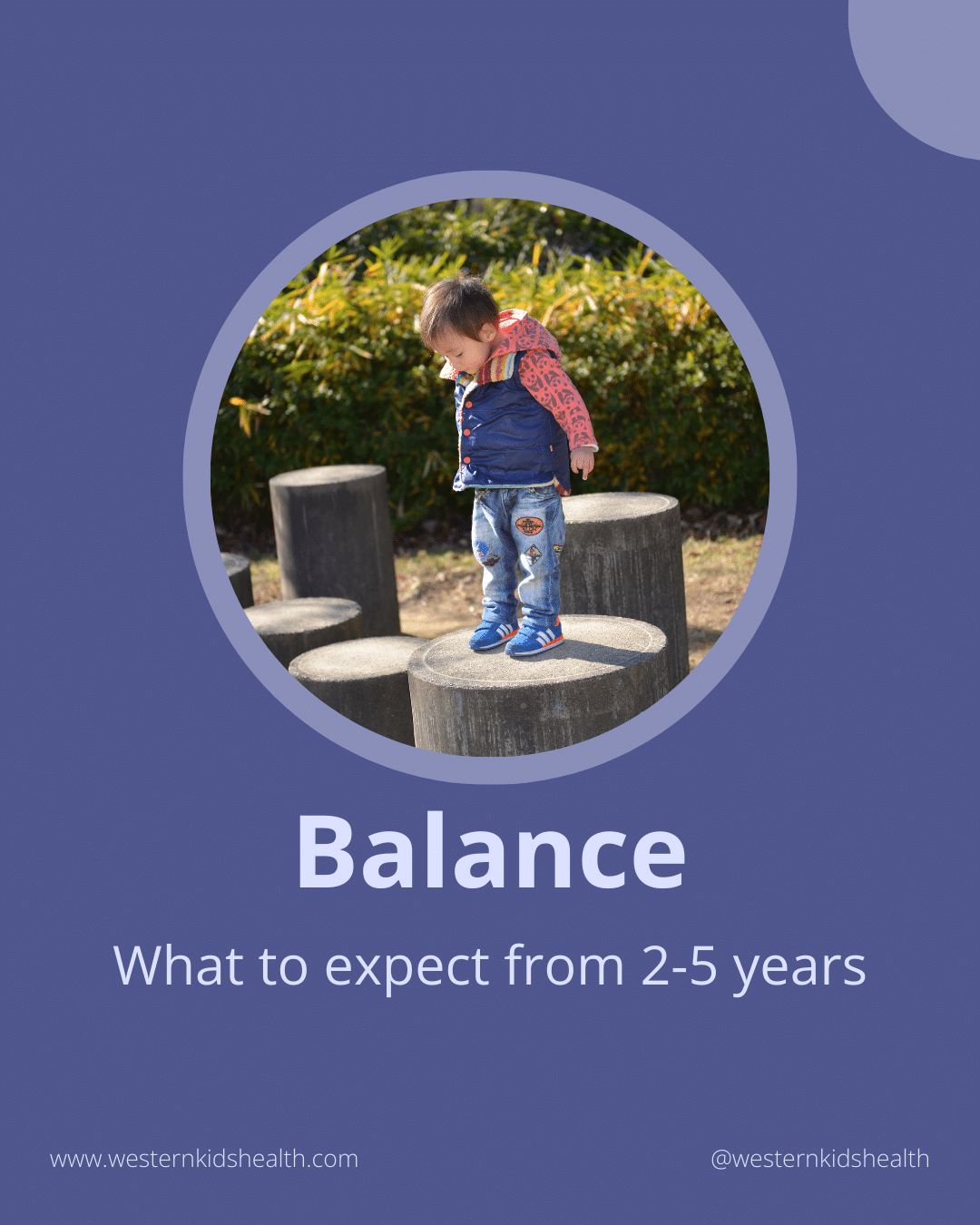
Balance: The what, how and why in 2-5 year olds
What is balance?
Balance is a skill to used when we need to maintain a controlled body position when completing day to day tasks. This could occur when walking on a balance beam, stepping onto different surfaces or even sitting at a table. There are two types of balance we need to consider to be able to move and function effectively across all environments.
- Static balance: The ability to hold a stationary position while maintaining control, for example standing or sitting
- Dynamic balance: The ability to maintain balance while moving through positions for example walking
Why is balance so important?
Balance is an important step to achieving age appropriate success in most sporting games, physical activities and even activities of daily living such as getting dressed and getting in and out of the car. Children who can master balance have more opportunity to:
- improve choice and control about what they will do and how they will do it. I can get dressed today by myself, I am going to walk around the park, I am going to ride to school
- participate and self-regulate in sporting events, developing social networks Following this, there is less chance for injuries and accidents (e.g. falling over)
- and improve postures during desk-based tasks resulting in benefits with fine motor skills

| 2 – 3 years |
|
| 3 – 4 years |
|
| 5 years |
|
How might I notice my child is finding balance tricky?
- Difficulty getting dressed standing up
- Difficulty balancing on beams or playing hopscotch
- Difficulty walking across different terrain, for example steps, kerbs, uneven surfaces
- Trouble getting in and out of the bath/shower or standing up off the toilet without needing to hold onto handrail
- Difficulty recovering from off balance falls such as tripping
- Avoidance of activities requiring full body movements such as sporting games or playground play
- Slower to reach milestones or master skills such as bike riding or kicking a ball
- Becoming nervous playing new games or on new playground equipment
- Getting tired faster than their peers
- Slouching at the desk when participating in school-based tasks (not because of boredom!)
What happens if my child doesn’t develop their balance skills?
- Poor self esteem may develop as your child is not able to perform to the same expectations as their peers or keep up with their peers
- They may have difficulty participating in social events such as birthday parties or sporting games which can result in isolation and limit opportunities to engage
- They may have difficulty with fine motor skills
- It may limit what your child can play with and how they can play with their friends, which again limits opportunity
What should I do if I am worried?
- Check out our Instagram for different ideas and activities to help your child build the necessary skills for balance
- Contact us if you prefer you can have a chat with one of our therapists on the phone
- You can also make an appointment for us to check your child’s balance






